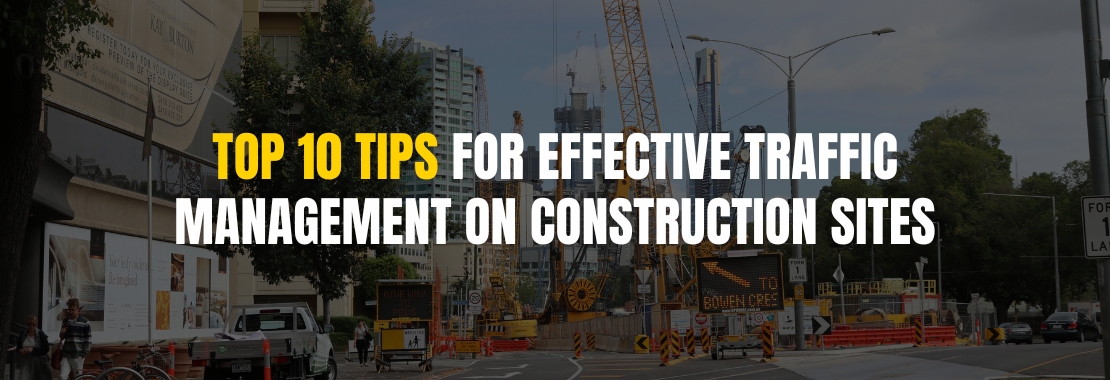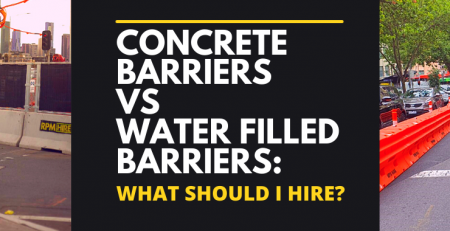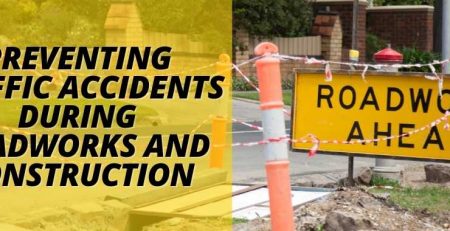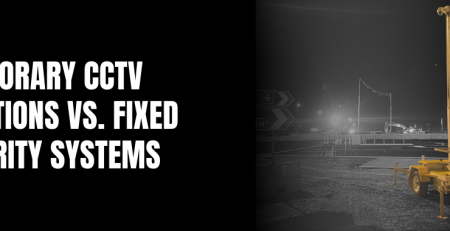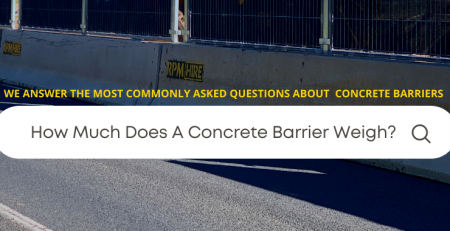Top 10 Tips for Effective Traffic Management on Construction Sites
When it comes to construction traffic control, effective management is critical to ensuring the safety of workers, motorists and pedestrians alike. A construction traffic management plan is also important to help you maintain operational efficiency and keep your project on track and on budget.
While there can be no denying the many benefits that effective construction traffic control can bring to your next project, knowing how to develop a reliable plan can be challenging. That is why we have put together our top ten tips to help you.
1. Develop a Comprehensive Traffic Management Plan
A comprehensive traffic management plan (TMP) is crucial for ensuring smooth and safe operations on construction sites. Your plan should outline traffic flow, designating specific routes for vehicles and pedestrians while identifying those areas where safety barriers, signs or other traffic control measures should be placed.
A well-documented TMP helps to reduce confusion and improve site organisation, ensuring all workers and contractors are aware of their roles and responsibilities. When creating yours, it is essential you are adhering to Australian standards, to ensure you remain compliant and are mitigating risks.
2. Conduct Regular Risk Assessments
Regular risk assessments are essential for identifying and mitigating hazards on construction sites. Traffic risks, such as vehicle-pedestrian interactions, blind spots, and congestion points, must be continuously evaluated to prevent accidents.
Site managers should conduct routine inspections, monitor traffic flow, and update the construction traffic management plan as needed.
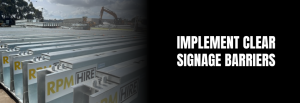
3. Implement Clear Signage Barriers
Another core element of any construction traffic management plan is ensuring you are implementing clear signage barriers. Implementing highly visible and correctly positioned signage and barriers will allow you to direct traffic correctly, protecting road users and workers. Additional traffic control measures, such as stop/slow bats and warning signs, also play a pivotal role in guiding motorists safely through construction zones.
Here at RPM Hire, we offer customers a wide range of essential construction traffic control products designed to help you clearly direct traffic and pedestrians through your site.
4. Separate Pedestrian and Vehicle Pathways
Clear separation between pedestrian and vehicle pathways is essential to prevent accidents on construction sites. Marked walkways, pedestrian-only zones and controlled crossings help minimise collision risks, especially in high-traffic areas.
Implementing physical barriers, such as safety barriers, can effectively segregate these pathways and clearly define where workers, visitors and members of the public need to go.
5. Train Personnel in Traffic Control Procedures
In order to create an effective construction traffic control plan, you need to ensure that you are providing comprehensive training to all traffic controllers and on-site staff. This will ensure that all personnel are equipped with the necessary skills and knowledge needed to control vehicles safely. When providing training, ensure it aligns with the latest Australian traffic management certifications and safety standards.
6. Schedule Deliveries During Off-Peak Hours
Planning deliveries and vehicle movements during off-peak hours is essential for reducing congestion and enhancing site safety. Peak times often coincide with high worker and equipment activity, increasing the risk of accidents, so scheduling deliveries early in the morning, late in the afternoon, or during designated low-traffic periods minimises disruptions and allows for smoother traffic flow.
Coordinating with suppliers and transport companies ensures efficient scheduling and prevents unnecessary delays. Implementing a construction traffic management plan that includes designated delivery windows helps maintain order and compliance with Australian safety regulations, improving both productivity and on-site safety.
7. Communicate the Traffic Plan to All Stakeholders
Clear communication is vital for effective construction traffic control. All workers, contractors, and visitors must understand the construction traffic management plan to navigate the site safely. Holding regular briefings will allow you to share crucial information with all stakeholders while also promoting awareness and encouraging adherence to all safety protocols.
Providing visual aids such as maps, signage, and digital updates can further reinforce key information.
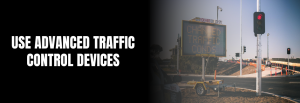
8. Use Advanced Traffic Control Devices
Modern traffic control devices improve safety and efficiency on construction sites. Variable Message Signs (VMS) provide real-time updates on hazards, detours and speed limits, ensuring a smooth flow of traffic. These signs can also be updated remotely, allowing you to adapt your construction traffic control plan as conditions change.
Other essential traffic control devices include portable traffic lights which regulate traffic; radar speed signs, which slow drivers down; and temporary traffic cameras, which provide an overview of current conditions.
9. Monitor and Adjust Traffic Management Strategies
Regularly monitoring traffic patterns is essential for maintaining safety and efficiency on construction sites. Traffic cameras, sensors, and on-site observations help identify congestion points and hazards in real time, allowing you to quickly adjust detours, modify signage or reschedule delivery routes to minimise disruptions.
Your site will constantly change as the project progresses, so it is vital that you regularly assess and refine your strategies to ensure safety.
10. Ensure Compliance with Australian Laws and Standards
Compliance with Australian traffic management laws and safety regulations is essential for reducing risks and maintaining operational efficiency on construction sites. Adhering to these standards ensures that traffic control devices, signage, and procedures meet national safety benchmarks.
Conclusion
Implementing effective traffic management strategies is essential for improving safety and efficiency on construction sites. Key practices, such as developing a comprehensive traffic management plan, conducting regular risk assessments and using advanced traffic control devices, will help you reduce accidents and delays and keep your project on time and on budget.
If you are developing a construction traffic management plan and are looking for high-quality products, RPM Hire is here to help. We have a huge range of equipment designed to help you maximise the safety of your site, so if you want to learn more about our range, get in touch with our team today.


